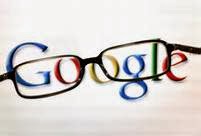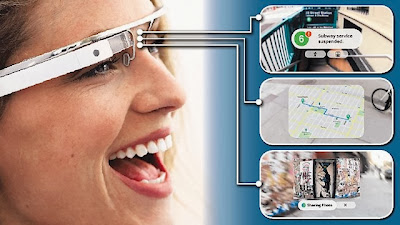HOW WILL GOOGLE MAKE GLASS COOL? BY KEEPING IT OUT OF YOUR HANDS
Since Google Glass first debuted in April of last year, many have criticized Google for charging $1,500 for the wearable gadget – a price so high that, if it remains at that level for the public release next year, average consumers will be priced out. So, the theory goes, Google will have to cut the price of Glass down to something more affordable if it wants Glass to be a market success. That’s what Google plans to do, right?
I doubt it – at least not anytime soon.
"Google appears to be trying to make you think Glass is cool"
The Mountain View company’s strategy for Glass thus far has been to make the augmented reality tech purposefully exclusive – a product by and for celebrities and elite members of the tech industry, not regular ol’ people like you or me. In doing so, Google appears to be trying to make you think Glass is cool – despite the fact that the specs look, well, super dorky.
Slapping on a hefty price tag to manufacture a “cool” factor is nothing new or unique to Glass. Take the fashion industry, for example. Luxury brands like Louis Vuitton and others intentionally charge outrageous prices for their items to keep the riff raff from dirtying their brand image.

“When Gucci sells a plain white tee for hundreds of dollars, it is not because it is spun from gold but to make it exclusive to a certain group of people,” says Cator Sparks, editor of Digital Trend’s fashionable brother site, The Manual. “Same with a Tom Ford tie costing more than most. It’s keeping it as a status symbol.”
The car industry performs the same trick, says Nick Jaynes, Digital Trend’s automotive section editor. For example, Cadillac’s new ELR plug-in hybrid is priced at nearly $75,000 in an effort “to compete with the Tesla Model S,” says Jaynes. And Kia’s new luxury sedan, the K900, will put you as much as $70,000 in the hole – for a Kia. Are Cadillac and Kia as cool as Tesla, BMW, or Mercedes? Definitely not – but they want to make potential customers think they are by inflating the price of their products.
In addition to the cost of Glass itself, Google revealed this week that even Glass accessories will cost you and arm and a leg. Need to replace the Glass earbud? That’ll be $50. Want a carrying pouch? That’s 50 bucks. too. Or how about a clear eye shield? That’s $75 – almost as much as an iPhone 5C.
Of course, stratospheric pricing isn’t the only way Google is boosting Glass’ cool factor. When it launched in March, only hand-picked “influencers” would have the privilege of purchasing Glass. As of this week, Google has expanded the program to allow those who already own Glass to invite up to three friends into the Glass club. In other words, the Glass Explorer program is the very definition of manufactured exclusivity. Does this strategy allow Google to work out the kinks of Glass before a bigger launch? Yes – but it also creates the sense that those who own Glass are special.
This marketing strategy is the exact opposite of the way Google has handled Android, which is to make the mobile operating system available to any company that wants it, for free. The result is a plethora of Android-powered devices, from high-end handsets like Nexus 5 to devices that carriers literally give away for free. There’s nothing exclusive or special about Android, as a result. That hasn’t stopped it from becoming the world’s most popular mobile OS. But Google appears to be taking Glass in the complete opposite direction.

Google does, however, have a history of using manufactured scarcity to promote a product: Gmail, which was invite-only (a.k.a. in “beta mode”) for ages. By requiring Web users to get an invite to Gmail from someone they knew, Google was able to make Gmail cool. (That’s how it seemed to me, anyway.) It wasn’t until eight years after its launch that Gmail became the Web’s most popular email client – and it seems as though Google is taking a similar, long-view tact with Glass. (Google tried the same thing with Google Plus, briefly, but instead took that one the other direction – making everyone who uses Google’s products have a G+ profile.)
If you’re expecting to have access to a budget-friendly pair of Glass anytime soon, prepare to be sorely disappointed.
On top of Glass’ price and the exclusive Explorer program, Google reportedly has plans to market Glass through a number of luxury showrooms, where upscale clients will have an opportunity to peruse Glass and other products created by the secretive Google X labs.
Guests will allegedly need to receive an invite to the showrooms, which are currently being constructed on barges in San Francisco and Portland, Maine. I say “allegedly” because Google has confirmed none of this, instead choosing to keep its showrooms a mystery, adding further mystic to the public’s perception of Glass.
Eventually, of course, Google will make Glass available to everyone at a reasonable price – that’s just common sense. And the product may be cool enough on its own to thrive without a $300 price tag. But if you’re expecting to have access to a budget-friendly pair of Glass anytime soon, prepare to be sorely disappointed.
Since Google Glass first debuted in April of last year, many have criticized Google for charging $1,500 for the wearable gadget – a price so high that, if it remains at that level for the public release next year, average consumers will be priced out. So, the theory goes, Google will have to cut the price of Glass down to something more affordable if it wants Glass to be a market success. That’s what Google plans to do, right?
I doubt it – at least not anytime soon.
"Google appears to be trying to make you think Glass is cool"
The Mountain View company’s strategy for Glass thus far has been to make the augmented reality tech purposefully exclusive – a product by and for celebrities and elite members of the tech industry, not regular ol’ people like you or me. In doing so, Google appears to be trying to make you think Glass is cool – despite the fact that the specs look, well, super dorky.
Slapping on a hefty price tag to manufacture a “cool” factor is nothing new or unique to Glass. Take the fashion industry, for example. Luxury brands like Louis Vuitton and others intentionally charge outrageous prices for their items to keep the riff raff from dirtying their brand image.

“When Gucci sells a plain white tee for hundreds of dollars, it is not because it is spun from gold but to make it exclusive to a certain group of people,” says Cator Sparks, editor of Digital Trend’s fashionable brother site, The Manual. “Same with a Tom Ford tie costing more than most. It’s keeping it as a status symbol.”
The car industry performs the same trick, says Nick Jaynes, Digital Trend’s automotive section editor. For example, Cadillac’s new ELR plug-in hybrid is priced at nearly $75,000 in an effort “to compete with the Tesla Model S,” says Jaynes. And Kia’s new luxury sedan, the K900, will put you as much as $70,000 in the hole – for a Kia. Are Cadillac and Kia as cool as Tesla, BMW, or Mercedes? Definitely not – but they want to make potential customers think they are by inflating the price of their products.
In addition to the cost of Glass itself, Google revealed this week that even Glass accessories will cost you and arm and a leg. Need to replace the Glass earbud? That’ll be $50. Want a carrying pouch? That’s 50 bucks. too. Or how about a clear eye shield? That’s $75 – almost as much as an iPhone 5C.
Of course, stratospheric pricing isn’t the only way Google is boosting Glass’ cool factor. When it launched in March, only hand-picked “influencers” would have the privilege of purchasing Glass. As of this week, Google has expanded the program to allow those who already own Glass to invite up to three friends into the Glass club. In other words, the Glass Explorer program is the very definition of manufactured exclusivity. Does this strategy allow Google to work out the kinks of Glass before a bigger launch? Yes – but it also creates the sense that those who own Glass are special.
This marketing strategy is the exact opposite of the way Google has handled Android, which is to make the mobile operating system available to any company that wants it, for free. The result is a plethora of Android-powered devices, from high-end handsets like Nexus 5 to devices that carriers literally give away for free. There’s nothing exclusive or special about Android, as a result. That hasn’t stopped it from becoming the world’s most popular mobile OS. But Google appears to be taking Glass in the complete opposite direction.

Google does, however, have a history of using manufactured scarcity to promote a product: Gmail, which was invite-only (a.k.a. in “beta mode”) for ages. By requiring Web users to get an invite to Gmail from someone they knew, Google was able to make Gmail cool. (That’s how it seemed to me, anyway.) It wasn’t until eight years after its launch that Gmail became the Web’s most popular email client – and it seems as though Google is taking a similar, long-view tact with Glass. (Google tried the same thing with Google Plus, briefly, but instead took that one the other direction – making everyone who uses Google’s products have a G+ profile.)
If you’re expecting to have access to a budget-friendly pair of Glass anytime soon, prepare to be sorely disappointed.
On top of Glass’ price and the exclusive Explorer program, Google reportedly has plans to market Glass through a number of luxury showrooms, where upscale clients will have an opportunity to peruse Glass and other products created by the secretive Google X labs.
Guests will allegedly need to receive an invite to the showrooms, which are currently being constructed on barges in San Francisco and Portland, Maine. I say “allegedly” because Google has confirmed none of this, instead choosing to keep its showrooms a mystery, adding further mystic to the public’s perception of Glass.
Eventually, of course, Google will make Glass available to everyone at a reasonable price – that’s just common sense. And the product may be cool enough on its own to thrive without a $300 price tag. But if you’re expecting to have access to a budget-friendly pair of Glass anytime soon, prepare to be sorely disappointed.
Sunny Kabra



















